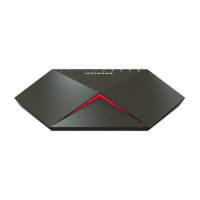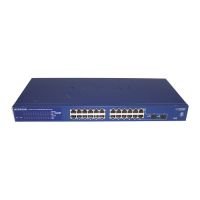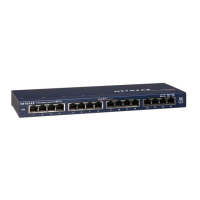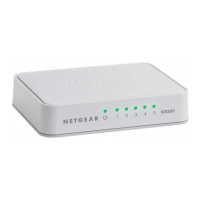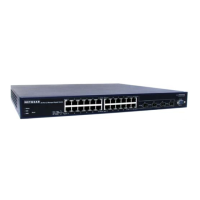Configuring Switching
162
S3300 Smart Managed Pro Switch
• STP Status. Enable or disable the Spanning Tree Protocol Administrative Mode
associated with the port or port channel.
• Fast L
ink. Specifies if the specified port is an Edge Port with the CST. Possible
values are Enable or Disable. The default is Disable.
• BP
DU Forwarding. Specifies whether spanning tree BPDUs should be forwarded
while spanning-tree is disabled on the switch. The value is enabled or disabled.
• Auto Edge. Con
figure the auto edge mode of a port by selecting to enable or disable
allowing the port to become an edge port if it does not see BPDUs for some duration.
• Path Cost.
Set the Path Cost to a new value for the specified port in the common and
internal spanning tree. It takes a value in the range of 0–200000000.
• Priority. T
he priority for a particular port within the CST. The port priority is set in
multiples of 16. If you specify a value that is not a multiple of 16, the priority is set to
the priority is automatically set to the next lowest priority that is a multiple of 16. For
example, if you set a value between 0 and 15, the priority is set to 0. If you specify a
number between 16 and 31, the priority is set to 16. Priority range is 0-240. The
default value is 128.
• External Port Path Cost.
Set the External Path Cost to a new value for the specified
port in the spanning tree. It takes a value in the range of 0–200000000.
4. Click the Appl
y button to send the updated configuration to the switch. Configuration
changes take effect immediately.
Table 52, Advanced CST Port Configuration describes the non-configurable fields.
Click Up
date to update the page with the latest information on the switch.
Table 52. Advanced CST Port Configuration
Field Description
Port State The Forwarding state of this port. The default is disabled.
Port ID The port identifier for the specified port withi
n the CST. It is made up from the
port priority and the interface number of the port.
Hello Timer Specifies the switch Hello time, which indicates the amount of time in seconds a
port waits between configuration messages. The default is 2 seconds.
CST Port Status
Use the Spanning Tree CST Port Status screen to display Common Spanning Tree (CST)
and Internal Spanning Tree on a specific port on the switch.
To display the Spanning Tree CST Port Status screen, click Sw
itching > STP > Advanced >
CST Port Status.
The following table describes the CST Status information
displayed on the screen.
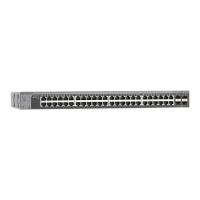
